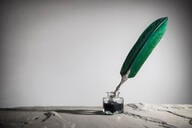You have /5 articles left.
Sign up for a free account or log in.
What do faculty members know about transfer-related matters? Does it really matter what they know?
These are some of the questions we set out to investigate in the latest effort of the Transfer Opportunity Project (TOP; one of the A2B group of projects) housed at the City University of New York. Our preliminary results suggest that there are major gaps in what faculty know about transfer, and what faculty don’t know may inadvertently harm transfer students.
The faculty voice has been a missing piece in our studies of transfer matters and may contribute to our understanding of why, in state after state, in system after system, transfer does not work as well as it should. There are many surveys of the views of students and advising staff on transfer experiences, policies and practices. But to the best of our knowledge, there is no published research on surveys of faculty views of student transfer with more than a few dozen participants on just a few topics. Given that we know that faculty members make many or even most of the decisions about credit transfer—by evaluating individual transcripts or courses, setting transfer credit policies, approving articulation agreements and/or advising students, we can reasonably infer that what they know and think about transfer have implications for transfer student progress and success.
We therefore developed the Faculty Survey on Student Transfer (FSST) to study a wide range of faculty views on transfer. Paramount among these study topics were potentially malleable views that the existing literature and our own research suggested might affect transfer student experiences and outcomes. The FSST included questions about respondents’ 1) personal and professional backgrounds, 2) levels of transfer experience and engagement, 3) levels of knowledge of policies and practices related to transfer, 4) beliefs about the causes of student academic success, 5) perceptions about community college students and courses, and 6) perceptions of faculty’s colleges’ support for transfer students.
The FSST was developed over two years in an iterative process that included numerous consultations and pilot tests with the faculty and staff of CUNY, where the research was conducted. CUNY is the nation’s largest urban public university. With its 20 undergraduate institutions—including those that offer associate degrees only, both associate and bachelor’s degrees and bachelor’s degrees only—and multiple graduate and professional institutions, CUNY was built to be a uniquely integrated system, one that facilitates social mobility by providing access at multiple entry points and ladders to degree programs from the associate to the doctoral levels. Approximately 25,000 students transfer from one CUNY college to another each year, and over 50 percent of the graduates of every CUNY bachelor’s college consist of transfer students. Further, over 50 percent of CUNY students are Pell Grant recipients, members of underrepresented racial and ethnic groups, and are the first in their families to graduate college.
In fall 2021, the TOP team fielded what we believe is the largest and most comprehensive survey of faculty experiences with, and views on, transfer ever conducted. We sent the survey to 17,381 full- and part-time faculty in CUNY’s 20 undergraduate institutions and received 3,871 eligible responses for an overall response rate of 22 percent (including 26 percent at CUNY’s associate degree–granting colleges and 22 percent at CUNY’s bachelor’s degree–granting colleges). A total of 33 percent of the full-time faculty and 16 percent of the part-time faculty participated in the survey. The response rate among full professors was 33 percent.
We are learning much more from our analyses of the faculty responses to this survey than we can share here, but one emerging finding is this: even in a system such as CUNY that was built for transfer, many faculty know very little about transfer policies, practices and student outcomes. Faculty members are—to some degree—aware of the gaps in their knowledge. When asked to rate how confident they were in their knowledge of transfer policies on a seven-point scale on which 1 means not at all confident and 7 means very confident, the mean confidence ratings for both associate (M=3.4) and bachelor’s (M=3.2) program faculty were below the midpoint. But perhaps the most telling findings are the high percentages of “wrong” answers to informational items for which there are right and wrong answers and of “don’t know” responses to informational items.
Of the five informational items answered by both associate and bachelor’s program faculty in which there were correct and incorrect answers, there was only one item to which at least 50 percent of the respondents got the right answer. Even faculty who had formal roles related to transfer (as chairs, advisers and so on) answered these items correctly only 41 percent of the time. Some of these items touched on critical issues with important implications for advising associate degree students.
For example, faculty were asked to agree or disagree with the statement “Students who transfer after having received an associate’s degree have more of their credits transferred to bachelor’s degree programs than students who transfer without an associate’s degree.” The correct answer is “disagree.” Only 6 percent of associate program faculty and 5 percent of bachelor’s program faculty answered this item correctly; 42 percent of the associate program faculty and 24 percent of the bachelor’s program faculty answered incorrectly. Fully 50 percent of associate program faculty and 70 percent of the bachelor’s program faculty answered “don’t know.” Moreover, only 7 percent of all faculty who reported ever having had formal roles gave the correct answer to this item, compared with 5 percent of faculty who reported never having had such roles.
These findings suggest that some associate degree students may be unintentionally misadvised about the transfer credit advantages (or disadvantages) of getting the associate degree before transferring.
To three of the five information items, faculty over all answered “don’t know” more than 58 percent of the time. “Don’t know” answers are inherently difficult to interpret because they could mean something other than that respondents do not know the answer. Perhaps respondents do not want to answer questions on a specific topic or to take time to think through the question and give a “real” answer. But for informational items in which “don’t know” answers co-occur with relatively high levels of incorrect answers and low levels of correct answers, it seems likely that people chose “don’t know” because they genuinely did not know the answer.
For example, “To the best of your knowledge, about what percentage of the graduates of your primary college every year are vertical transfer students?” bachelor’s program faculty answered “don’t know” 70 percent of the time, and they were twice as likely to give the wrong answer than the right one: that more than 50 percent of those graduates are vertical transfer students. If bachelor’s program faculty have no idea that many and often most of their students—including their majors—started their college careers elsewhere, then they may make faulty assumptions about vertical transfer students’ prior learning and level of preparedness. They may also be less likely to recognize the challenges that many of their transfer students face in getting good advice about course taking, securing the right academic supports and finding community and a sense of belonging.
At bachelor’s-granting institutions at CUNY and across the nation, there has historically been a particular focus on first-time, full-time freshmen that has rendered transfer students nearly invisible. That makes it very difficult for anyone—faculty or even administrators—to have good information about transfer students. One of us was already provost of CUNY’s Hunter College for several months before realizing that fully two-thirds of the graduates she would celebrate at Hunter’s commencement were transfer students.
Colleges and universities are now more aware of the moral, societal and financial imperatives of attending to transfer students. But to better serve transfer students, we need to have the facts—and faculty members (and others) don’t have them. Our data suggest that faculty members who work with both prospective and current vertical transfer students, including those in decision-making roles, don’t know enough about transfer, and some of what they think they know is wrong. We need to bring these facts to the faculty and other decision makers and work together across community and senior college sectors to benefit transfer students.
Vita C. Rabinowitz, a social psychologist, is a Leadership Fellow of the Heckscher Foundation for Children and professor emerita of Hunter College. She is a former provost of Hunter College and former executive vice chancellor and university provost and interim chancellor of CUNY. Yoshiko Oka is a research analyst in the CUNY Office of Applied Research, Evaluation and Data Analytics. Alexandra W. Logue is a research professor at the Center for Advanced Study in Education, Graduate Center, CUNY, and the principal or co-principal investigator of each of the A2B projects. From 2008 to 2014 she was executive vice chancellor and university provost of the CUNY system.


